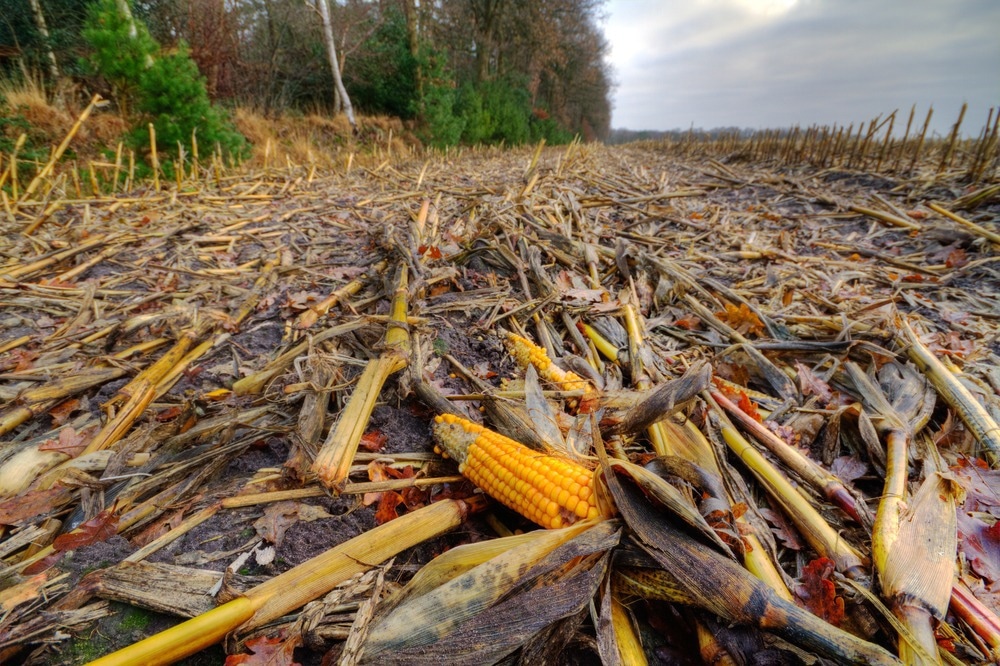A research paper published in ACS Applied Materials & Interfaces detailed the development of a corn biomass-based carbon framework and a green cross-linking binder for a silicon-based electrode in lithium-ion batteries. The goal was to minimize the decline in specific capacity because of volumetric expansion and contraction after charge/discharge cycles.

Study: Structural and Interfacial Characterization of a Sustainable Si/Hard Carbon Composite Anode for Lithium-Ion Batteries. Image Credit: Matauw/Shutterstock.com
Li-ion Battery Research
The growing use of electric vehicles, portable electronic gadgets, and energy storing platforms has resulted in an ever-increasing need for raw materials used in manufacturing lithium-ion batteries (LIBs).
Excellent cyclic life, ubiquitous availability and cheap cost have made graphite the currently preferred material for making anodes of LIBs. However, graphite anodes are plagued with drawbacks of poor specific capacity, energy density, and safety concerns associated with the deposition of lithium (Li).
Finding suitable alternatives to graphite for anode materials of LIBs is currently receiving a lot of attention. The goal is to develop inexpensive anode materials that have improved safety, a higher specific capacity and energy density, and extended cyclic life.
Extracting value from waste materials via recycled uses is critical for lowering the ecological detriment caused by their direct disposal.
Pros and Cons of Using Silicon-based Materials
Alloy-based anodes are renowned for their improved safety and excellent specific capacities.
High specific capacities at ambient temperatures, low operating potential against Li+/Li, and availability make silicon (Si)-based alloy anodes favorable materials for usage in state-of-the-art LIBs.
Despite its superior electrochemical behavior, silicon undergoes large volumetric fluctuations during charging/discharging cycles, resulting in interface instability, pulverization of electrodes, breakdown of electric contact, and rapid decline in performance.
Using Non-Graphitizing Carbon to Overcome Weaknesses of Si-based Alloys
To address the drawbacks of silicon-based alloy anodes, employing carbon-based materials as a buffering matrix for the volumetric expansion of alloy anodes is an attractive approach.
Using non-graphitizing carbon in composite anodes facilitates the combination of desired chemical and physical properties of carbon-based materials with large volumetric and gravimetric energy densities of alloy materials.
Non-graphitizing carbon is quite appealing as it can be produced from biomass waste. Subject to adequate optimization, the production of non-graphitizing carbon can have a smaller overall impact concerning manufacturing costs and energy efficiency compared to more complex carbon-based materials like graphene.
Advantages of Green Binders
Green binders that include large concentrations of functional units like hydroxyl (-OH), carboxyl (-COOH), or amino groups (-NH2) may help in boosting the effectiveness as well as the stability of alloy-based materials.
These advantageous characteristics can be attributed to the binder's superior elasticity and adhering qualities and better interactions between the active component and binder.
Binder selection is critical for alloy-based materials because of the possibilities of utilizing intra- and intermolecular polar forces.
Findings of the Research
In this study, the team investigated the stability and effectiveness of a composite anode made of silicon and biomass-based non-graphitizing carbon, supported by a green cross-linking binder.
The galvanostatic cycle demonstrated relatively good performance equivalent to the performance shown by the same material using industrial graphite as the buffer matrix, but with greater stability during extended cycles and no solid electrolyte interphase breakup.
The cross-linking green binder was shown to be more successful than the previously reported binders in fostering increased structural stability. The composite anode demonstrated excellent capacity retention and minimal polarization in the rate capability test, even at elevated current rates.
The findings illustrated that the non-graphitic carbon framework is useful for buffering volumetric variations during cycling. Additionally, stable solid electrolyte interphase was created after the first cycle, making a minimal contribution to the overall impedance and requiring no further electrolyte breakdown in proceeding cycles. The team also established the reversibility of the process.
The composite anode demonstrated remarkable properties despite the high silicon content. Furthermore, the non-graphitic carbon was procured using biomass waste without any preliminary treatment before pyrolysis. This approach ultimately proved to be a more sustainable method of transforming waste biomass into useful resources.
Reference
Sbrascini, L., Staffolani, A., Bottoni, L., Darjazi, H., Minnetti, L., Minicucci, M., & Nobili, F. (2022). Structural and Interfacial Characterization of a Sustainable Si/Hard Carbon Composite Anode for Lithium-Ion Batteries. ACS Applied Materials & Interfaces. Available at: https://pubs.acs.org/doi/10.1021/acsami.2c07888
Disclaimer: The views expressed here are those of the author expressed in their private capacity and do not necessarily represent the views of AZoM.com Limited T/A AZoNetwork the owner and operator of this website. This disclaimer forms part of the Terms and conditions of use of this website.